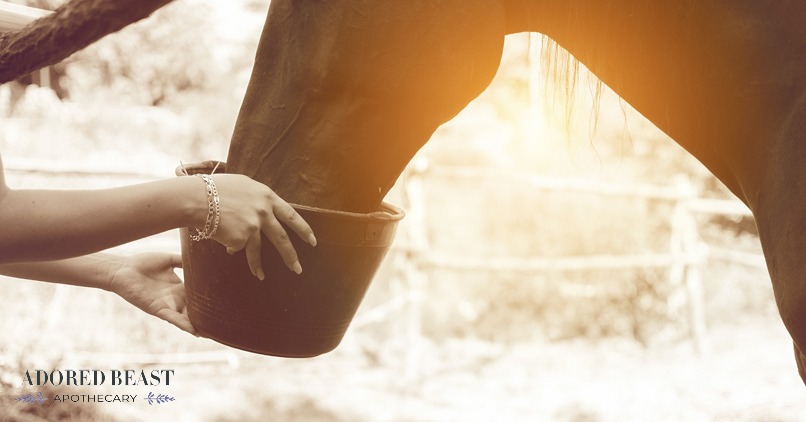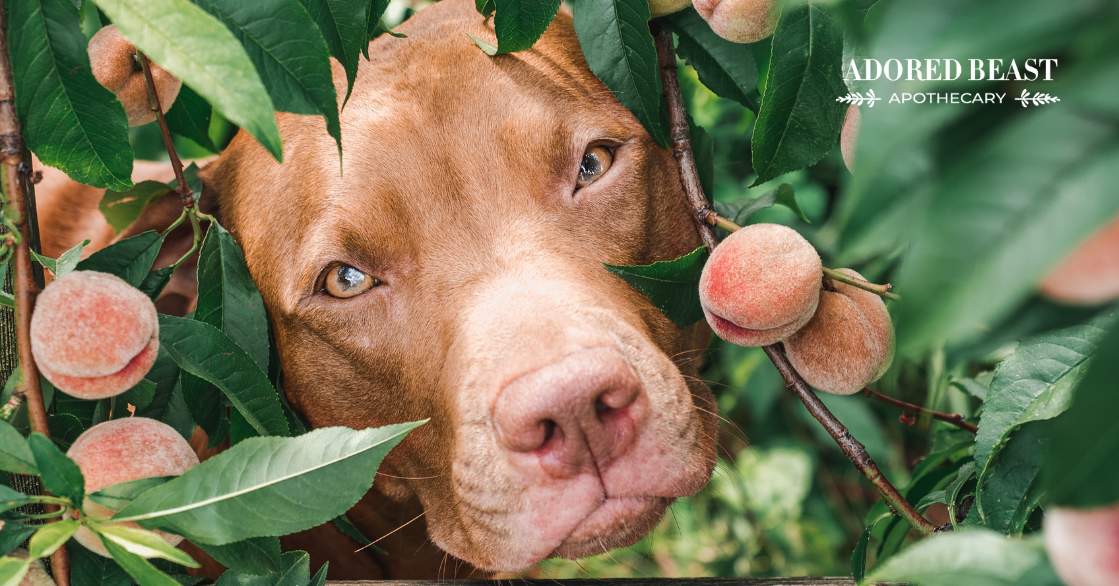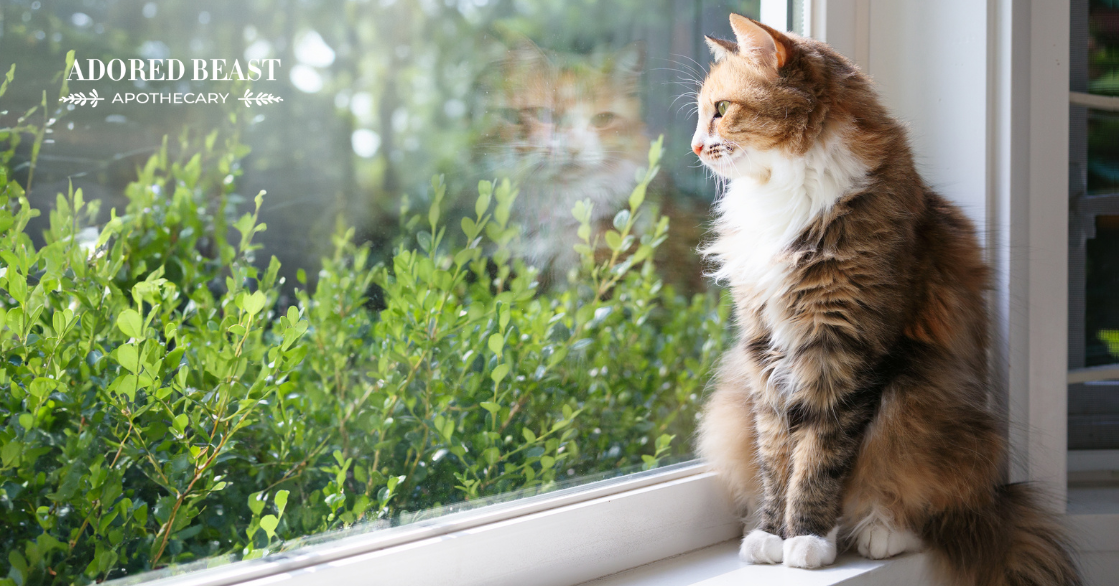The horse feed industry is a lot like the pet feed industry. It’s big business, especially when it comes to performance horses. Countless companies compete for shelf space and for the chance to get into your horse’s bucket. But do you really know what you’re feeding your horse when you measure out those pellets? When it comes to equine nutrition, there are some important things you need to know…
The ABCs of Equine Nutrition
When we talk about equine nutrition, it’s important to understand that this concept can mean different things to different people. If you’ve read my other blogs, you’ll know that I have a species-appropriate philosophy when it comes to the subject of food, whether you’re feeding a snail, a pig, a cat, a horse, or yourself. This is where I always begin.
So what does it mean to feed a “healthy diet”? Does it mean sitting down with a calculator to determine the exact percentages and parts per million of each nutrient you’re feeding? Does it mean following the National Research Council’s (NRC) guidelines for equine nutrient requirements by feeding the exact same thing every single day? Does it mean ignoring all nutrients that are unresearched or aren’t recognized by the NRC even though they are naturally-occurring in the ancestral equine diet? This is the conventional method that is currently employed by the experts in horse nutrition. Is it possible to feed horses using fresh foods rather than highly processed feeds? Let’s think outside the box and explore.
What is the National Research Council?
The current authority on equine nutrition is the National Research Council. The NRC is a committee of researchers that compiles and reviews animal research in regards to nutrition and creates guidelines for their best guess at what is required from an animal’s diet in order to survive in different life stages and levels of work. This includes dogs, cats, horses, and livestock. They continually review emerging science to determine what horses should be eating and in what amounts. But it’s based largely on clinical data, which never shows us the entire picture when it comes to nutrition and health.
Because it’s so darned hard to find the NRC nutritional requirements for horses online, I’m going to publish some of it for you here so you can see where we are at in the world of equine nutrition science. You don’t have to focus on the numbers as much as looking at it from the bigger picture of where we’re still lacking information on the dietary requirements of horses.
Let’s use an average sized horse of 500 kgs in light exercise as an example. This is what is listed as the known requirements for horses from the NRC:
NRC Guidelines for Adult Horses in Light Work – Per 500kgs (2018)

Understanding Calories and Energy
DE: Digestible Energy – Macro Nutrients
Macronutrients include protein, fat and carbohydrate – the total caloric value of these 3 types of energy are lumped into the category of digestible energy requirements. The 2018 NRC Manual of Nutrition Requirements for Horses states that carbohydrates are the primary form of energy in the equine diet. Unfortunately, it’s not so simple and requires careful consideration for each horse. Keep reading!
Calories/Energy can come from the 3 macronutrients and provide the following:
- Calories from protein: 4 calories per gram
- Calories from fat: 9 calories per gram
- Calories from carbohydrate: 4 calories per gram
Hydrolysable (Water-Soluble) Carbohydrate Vs. Fibre
Non-fibrous carbohydrate is referred to in short as NFC – it is the portion of the feed that is easily converted into starch/glucose. The more naturally-occurring (unprocessed) fibre is called neutral detergent fibre (NDF) and makes up the undigestible roughage that is contained in a food source.
Cellulose is a good example of an indigestible fibre that cannot be broken down into sugar. Cellulose is one of the defining molecular structures of plants, the natural food source of horses. The more processed a feed becomes, the higher the NFC (digestible/water-soluble starch) becomes and the conversion to glucose is higher. This is an extremely important distinction to make with carbohydrate sources for horses since horses are quite sugar-sensitive.
Choosing high quality, low sugar hay is the best place to start. Always choose good quality hay over feed whenever possible.
Fats
Fats and oils are used in horse diets to increase energy since fat has about twice the caloric value of protein and carbs. It is often used in place of rapidly fermentable carbohydrate to keep glucose levels down. It also has a glucose-stabilizing effect. And, it helps with the absorption of the fat-soluble vitamins A, D, E and K so when it’s not balanced, deficiencies in these nutrients can arise. Performance horses often have higher fat rations than other types of horses because it gives them “cooling” energy, rather than “hot” energy. This can have a large impact on a horse’s behaviour and the type of energy they have.
It’s important to note that not all fats are created equal and we are starting to understand that, with other species, the types of fat you use to balance the diet can have an anti-inflammatory action or an inflammatory action depending on the balance. The saturated, mono-unsaturated, and polyunsaturated fat requirements for horses are, as yet, undetermined, but we know with other species that when the omega 6 and 3 profiles of the polyunsaturated fats is not balanced, it can create inflammation in the body tissues, contributing to hormone imbalance, gut disease, risk of obesity, neurologic issues, and chronic inflammatory diseases. (1) (2) (3) (4)
Lastly, polyunsaturated fat sources from oil can become rancid quite quickly and cause inflammatory complications for your horse. Choose small-batch, plant-based omega 3 fats for your horse and store all seeds, nuts, and oils in the fridge. And please don’t use fish oil! It’s not species-appropriate or environmentally sustainable.
Protein
Protein is made up of amino acids. There are 10 known essential amino acids for horses:
- arginine
- histidine
- isoleucine
- leucine
- lysine
- methionine
- phenylalanine
- threonine
- tryptophan
- valine
These are the amino acids that your horse cannot make in their body and they must come from the diet. There is very little conclusive science on amino acid requirements for horses. A study was done in 1991 of the amino acid composition of the muscle of the horse (Bryden, 1991) and those have remained the best guess for what horses require in terms of the essential amino acids and the only known parameters for determining deficiencies are through observational means (eg. weight loss, fetal loss, decrease milk production, poor hair, and hoof growth).
The NRC puts emphasis on providing “good quality” protein for horses. But what is their definition of good quality? Only that it is highly digestible and not necessarily from fresh, species-appropriate food sources. The NRC recommends corn, sourgum, and oats as quality ingredients for protein which, in their processed state, contain high amounts of hydrolysable carbohydrate (sugar). Legumes like alfalfa and soy are other popular protein sources for horses but with all of these options comes an unlisted dose of the herbicide known as Round Up – glyphosate – (see below). This is an unlisted ingredient in horse feed that no one seems to talk about and it’s a really big problem.
Balancing Macronutrients and Food Quality
The problem with the science of macronutrients with horses is that they are not interchangeable. And most people have no idea what the macronutrient make-up of their horse’s diet is. Additionally, they are such large animals that can be expensive to feed with high quality foods. The most commonly proposed feed options are the most cost-effective ones, not what’s best for long term health. It can be a battle to convince people to feed their horses more expensive food but if you don’t want to spend the money in bills related to ill-health, it’s best to choose better quality options. You’ll most likely end up spending the same amount of money over your horse’s lifetime whether you choose to save money with cheap food now and have vet bills later or encourage a more graceful aging process with a better quality diet. Nutritional insult and deficiencies play such a big role in your horse’s long term health.
Minerals
Horses need a wide variety of minerals to stay healthy and the requirements for these have been well studied. To date, it’s the most comprehensive piece of the equine nutrition puzzle. And, unfortunately, horses are often still not getting these requirements met, especially when it comes to zinc, selenium, copper, and other hard-to-come-by nutrients that don’t exist in our soils anymore. Most horses benefit from having these minerals added to their diet, especially those who are growing, aging, or in heavy work. Industrial salt bocks aren’t enough. Lastly, if your horses are on well water that is high in iron, you’ll want to be adding these trace minerals to your horse’s diet to balance out the iron:zinc:copper ratio.
Horse-Friendly Foods Rich in:
- Zinc: chia, flax, hep and pumpkin seeds are all a great source of zinc
- Selenium: Nutritional yeast or an organic selenium supplement (selenomethionine)
- Copper: Leafy greens, nuts and seeds (especially sunflower), spirulina and medicinal mushrooms including chaga, turkey tail, and shiitake
Vitamins
There is very little research on the vitamin requirements for horses. Above, you will see that only two B vitamins are listed with known requirements in the table above along with the fat-soluble vitamins A, D, and E. But what about the rest? Unfortunately, there isn’t a lot of research at this time. We do know that some B vitamins (especially B12) are made by the gut microbiome so it’s extremely important to support your horse’s gut health so they can make enough B vitamins. Science shows that B vitamin requirements likely increase with stress so it’s extra important for performance horses to have extra access to them to support neurological and health. (5)
Not All Vitamins and Minerals are Equal
Another consideration is that the quality of the vitamins and minerals you are providing can vary greatly. When you use synthetic vitamin/mineral premixes, you can be missing the mark when it comes to bioavailability/absorption.
For example, zinc oxide is a low quality/cost-effective zinc supplement that you’ll see in a lot of supplements. But, it has very low bioavailability and is potentially toxic, causing more harm than good to your horse. (6) On the vitamin side, folic acid is often offered in supplements and is often considered the same as folate. But folic acid needs to be converted into folate and depending on your horse’s genetic ability to do this along with their GI and liver health status, they may not be able to do this with synthetic folic acid alone. Folate is the natural form found in foods (eg. leafy greens, nuts, legumes) is in more readily available to your horse.
These are just two examples of how synthetics aren’t always the best route for supplementation. It is best to consider fresh foods for your horse instead. Herbs are a great way to provide a wide variety of vitamins and minerals to your horse. Stay tuned for future blogs about this!
Are You Feeding Your Horse the Herbicide Round Up?
“Round Up-Ready” crops = the basis of most horse feeds. They include sugar beets, corn, wheat, soy, cotton seed, alfalfa, and more. If you’re feeding these to your horse, you’re feeding your horse Round Up, AKA glyphosate. The known science on the health impacts of glyphosate are outlined in over 200 peer-reviewed studies and include hormone dysregulation, disturbance in the gut microbiome, cancer, kidney disease, and hoof disease. (7) (8)
The Holes In Equine Nutrition Research
So far, we know a little bit about equine nutrition from a clinical perspective, but I’m going to estimate that we probably know about 10% of what we need to know to prevent the chronic disease epidemics facing horses today. We have only scratched the surface. We have to stop mechanically breaking nutrition down into puzzle pieces and trying to fit them back together…
To fill in the missing puzzle pieces, we can look to what horses naturally eat in a non-clinical setting to help complete this picture. Clinical and field data perspectives should be considered together, especially with so many chronic diseases affecting horses today, including metabolic disease, neurological disease, laminitis, gut disease and more. Horses in man-made settings need extra support, not just the minimum. Performance horses also have a greater need for access to nutrition to keep their immune, nervous, and musculoskeletal systems fine-tuned. Individual nutrition programs are warranted in order to support horses in relation to their age, activity level, lifestyle, and health status.
I hope this gives you a place to start on what to consider when looking at your horse’s diet. It is totally possible to turf the highly processed/Round Up-Ready feed and have a thriving healthy horse!
References:
- Nutrients: An Increase in the omega 6/Omega 3 Fatty Acid Ratio Incr3eases the Risk of Obesity, 2016
- Internal Journal of Molecular Sciences: Omega 3 Vs. Omega 6 Polyunsaturated Fatty Acids in the Prevention and Treatment of Inflammatory Skin Diseases, 2020
- Journal of Nutrition and Metabolism: Health Implications of High Dietary Omega 6 Polyunsaturated Fatty Acids, 2012
- Colorado State University: Omega 3 Fatty Acid Supplementation in Horses, 2014
- Nutrients: B Vitamins and the Brain: Mechanisms, Dose and Efficacy – A Review, 2016
- Oxford University Toxicological Sciences: Zinc Oxide Nanoparticles – Induced Reactive Oxygen Species Promotes Multimodal Cyto and Epigenetic Toxicity, 2017
- Journal of Environmental Health: Concerns Over Use of Glyphosate-Based Herbicides and Risks Associated with Exposure: A Consensus Statement, 2016
- Video: Dr. Anthony Samsel’s Research on Glyphosate and Hoof Health in Horses, 2017












